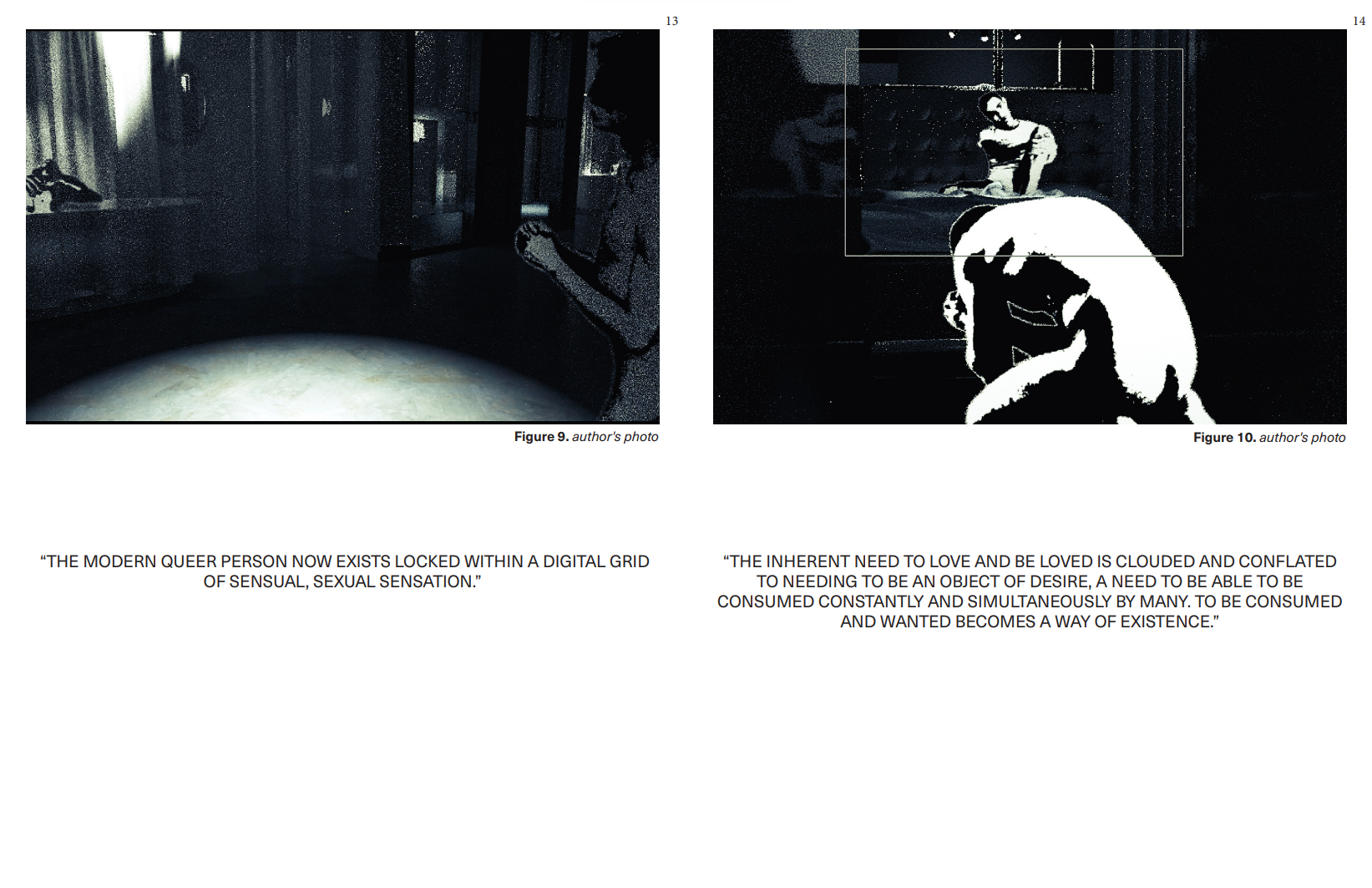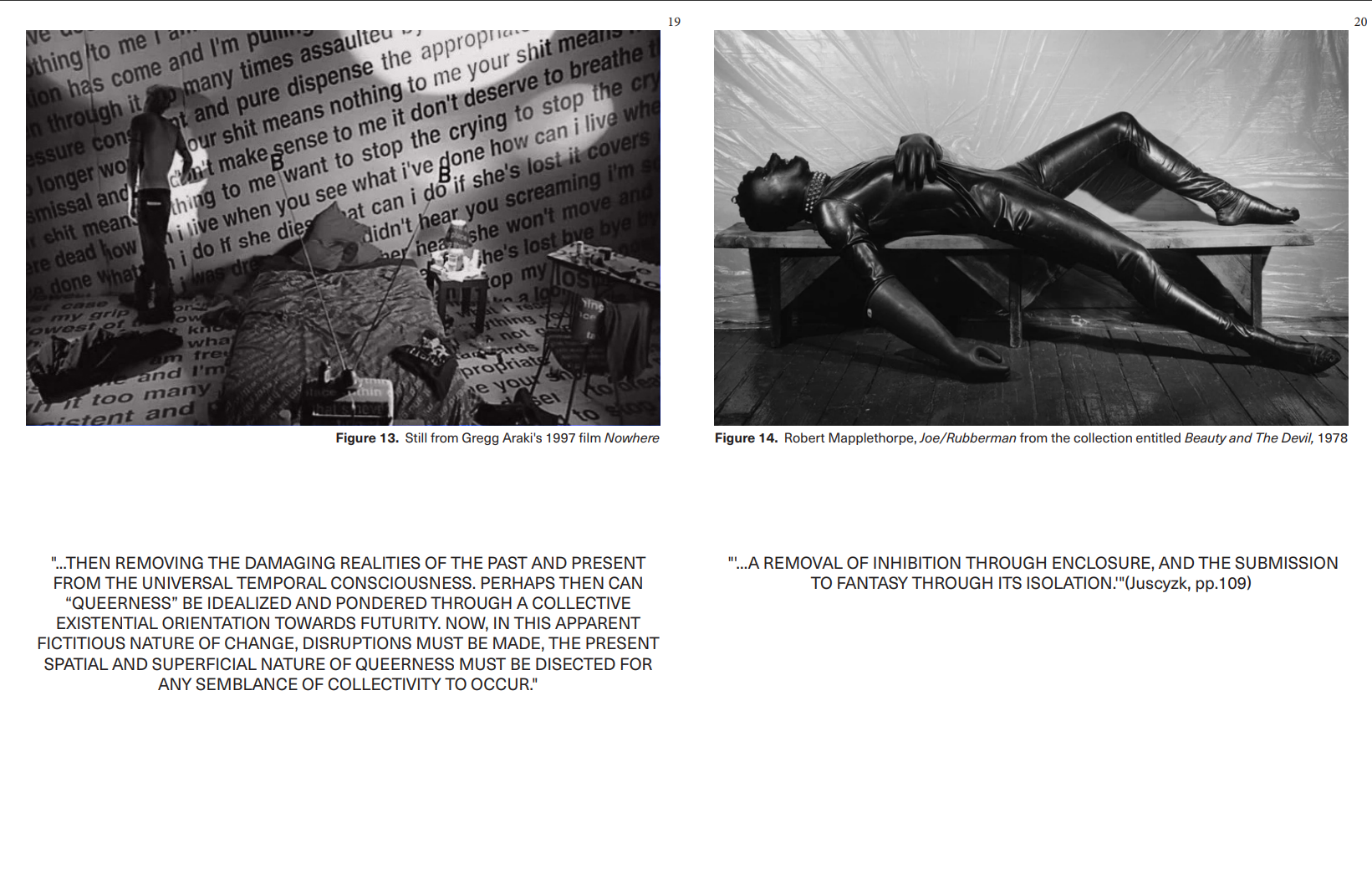ABSTRACT
——————————————————————————————————————
Rendering the Cyberfag: An Examination on the Spatial Sociology of Grindr attempts to dissect, theorize, and expose the current dismality of gay existence and space in direct correlation with the inception of the digital realm. The investigation begins by establishing a lexicon of socio-spatial attributes that aim to establish the reader within a basis of the spatial vulnerabilities attached with queer identities. A contextualizing chronology of aspects of queer history is presented, beginning with the act of cruising, and its subsequent demise during the AIDS epidemic. In parallel, the thesis follows the creation of the internet, which birthed gay anonymous internet communities, “sexting”, “cyberfantasy”, and the act of finding a sexual partner online. Ultimately, the project inhabits this intersection leading to the creation of Grindr, the concept of modern “homonormativity”, the establishment of gay people as “consumable”, and the active debasing of one’s own existence for the sake of consumability.
A THESIS IN ARCHITECTURE BY MATTHEW GERSHOVICH
This thesis highlights the creeping disillusionment with 21st century liberalism in relation to homosexuality. Then, aims to explore the continual relegation of gay existences into a “voidal” reality, disguised as furthured acceptance. Rendering the Cyberfag interlaces referential imagery from modern media as well as stills from the accompanying film created for this thesis to begin to visually and spatially charge these concepts within the canon of architectural thought. These images aim to subversively contextualize the text, and reframe these references within this critical analysis of the post-Grindr, post-physical era. The thesis culminates in a full length film, which accompanies the main text, also called Rendering the Cyberfag. The film is intentionally silent, disorienting, and subsequently charged; allowing ambiguity, to establish itself as an experience for questioning. It challenges the viewers’ to not attempt to pin down the film's place in reality, plausibility, or fictionality but instead asks the viewer to examine the intention behind its’ arrangement of bodies within an established space, and the representations of monotony, materiality, darkness, and light.

















